As one of the most popular ERP systems in the world, NetSuite offers numerous high-end applications and tools suitable for a variety of industries, including finance. But what if your company is also using another solution like SharePoint and you need to access files from there? How can you do file transfers from NetSuite to SharePoint?
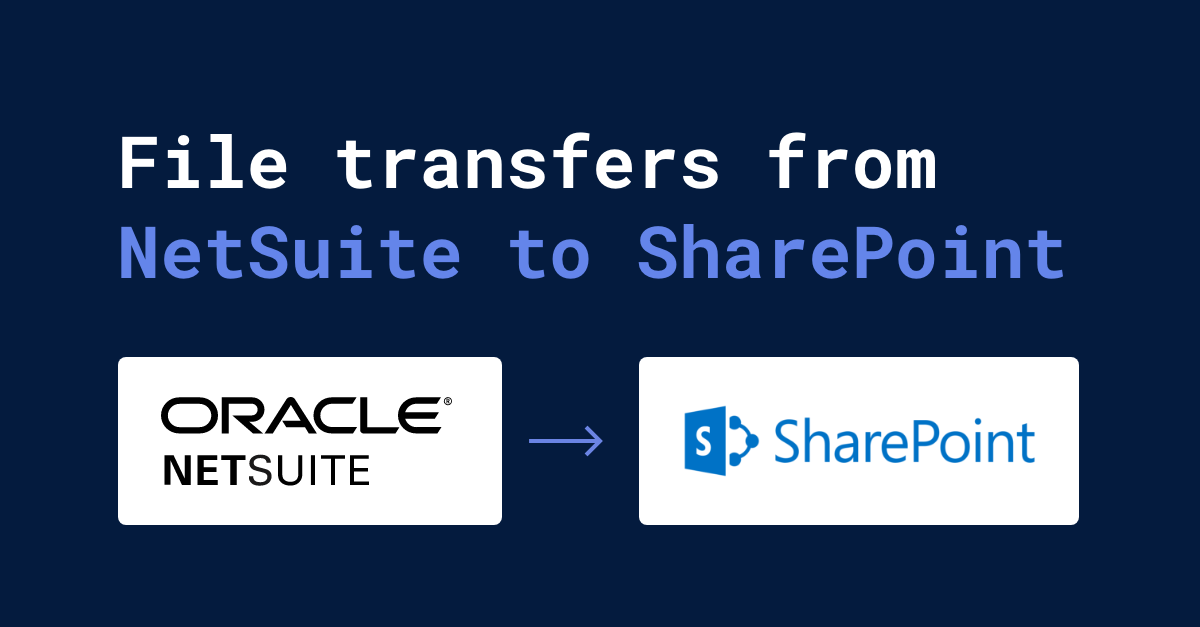
NetSuite has a native SFTP Connector Suite App that you can connect to through the NetSuite Applications Suite. The SFTP Connector works well for simple and straightforward transfers. So why would you use Couchdrop compared to this built-in app? Some reasons are for Connectivity, Simplicity, and File Automations.
Connectivity
NetSuite’s SFTP solution works decently for sending files to a remote server. But where the SFTP Connector Suite App falls short is if you want to connect to another cloud storage account like SharePoint.
One of the main benefits of Couchdrop is that it lets you connect your existing cloud storage and transfer files between them. You can also connect to local or remote servers–where NetSuite files are likely being saved–and copy/move those to SharePoint via SFTP.
All you need to do is add your current storage and then connect to your SharePoint account in Couchdrop, and you can seamlessly transfer files from your system running NetSuite into SharePoint.
Simplicity
The goal of Couchdrop is to be the simplest and most effective option for file transfers. This includes setting up an SFTP server. You don’t have to spin up virtual machines or go through a complex installation sequence. Couchdrop is cloud native and handles all of this for you, including maintaining and managing servers.
Setup only takes a few clicks. Simply register an account and choose your subdomain and your SFTP server is set up using the information you provided at sign-up with no need to write out a config file.
From there, everything is managed in Couchdrop’s simple web interface. It’s straightforward and easy to navigate instead of being bloated and complicated so you can easily access important features like adding storage integrations including SharePoint for your NetSuite data storage.
File Automations
Some SFTP servers can run workflows like moving files from a specific directory into a new folder at a certain time, like on the last day of the month. The two main advantages to Couchdrop are that it can run complex, multi-step automations with more file actions and that the automations can run on connected cloud storage.
Couchdrop automations currently have 11 different actions, including sending a webhook that you configure. Some uncommon but useful options that Couchdrop automations can do for finance and banking are encrypting and decrypting files, compressing and decompressing files, and sending emails to a specified recipient. For a complete rundown of what Couchdrop automations can do, see the article Configuring Couchdrop Automations.
These automations can run on any storage connected to Couchdrop. For instance, suppose that you were looking to move gross profit reports generated from NetSuite into SharePoint for an annual presentation. Using Couchdrop, you can take the reports from where NetSuite generates them on your server, rename them to “2023 Profitability Forecast Data_X” and move them into a SharePoint site and in the “2023 Annual Profit Report” directory. And you can have it done on a schedule, for each report generated, only for reports matching a certain filename, or with any other parameters you configure.
Using Couchdrop to connect NetSuite to SharePoint
There are two things you’ll need to do to connect NetSuite to SharePoint. First, you need to add NetSuite as a storage integration. Next, you’ll need to add SharePoint. Once completed, you can access or move files from both accounts directly in Couchdrop.
Adding NetSuite as a storage integration
Couchdrop can connect to dozens of cloud platforms. While it doesn’t have a direct connection to NetSuite, there are two ways to connect to NetSuite files. The first method is to use the Couchdrop agent on a server where NetSuite files are downloaded to. The second is to connect as a remote SFTP server, such as connecting to the NetSuiteSFTP Connector SuiteApp.
Method 1: Using the Couchdrop Agent
If you download the NetSuite files you want in SharePoint to a server, you can connect to that server in a few minutes by using the Windows/OSX server connection and installing that on the device where NetSuite files are saved.
The Windows/OSX connection is a low-resource agent that you install the same as a Windows or OSX application. To download the agent, first register for a Couchdrop account and log in. Once you’re logged in, choose Add Storage Integration and then Windows/OSX Server at the bottom of the list.
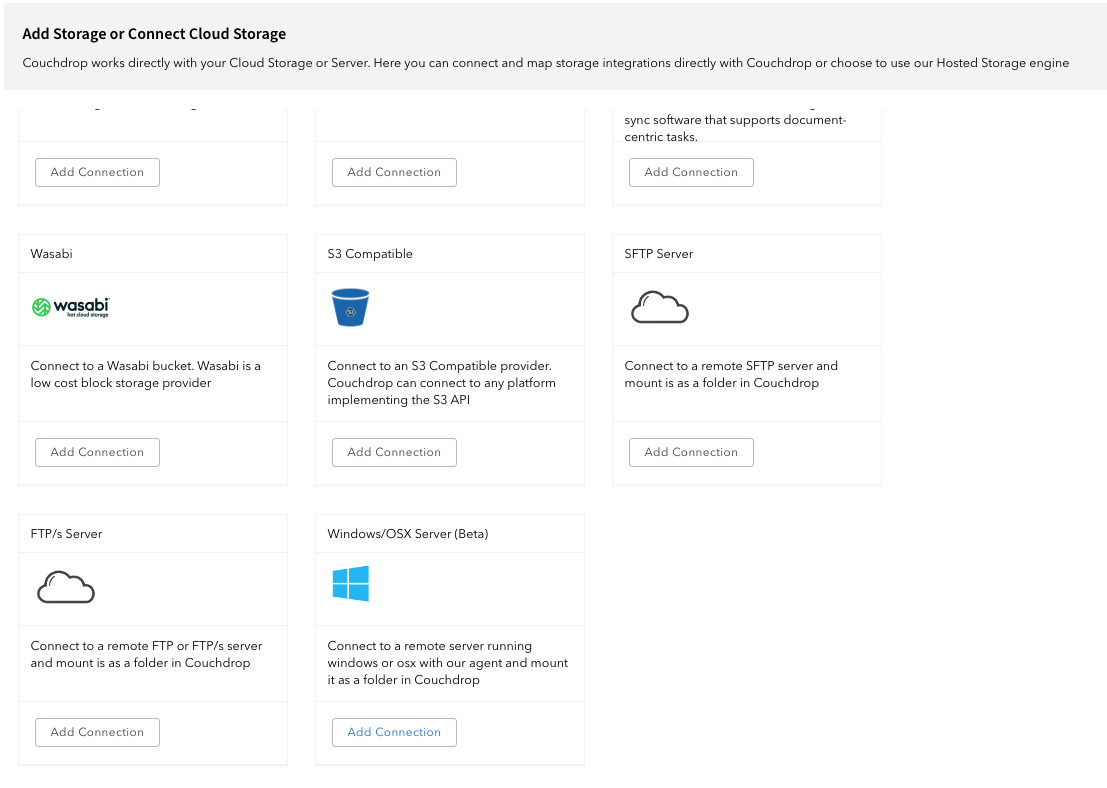
A new window will open. Next, you need to choose how the integration will appear in Couchdrop. Then click to download the Windows or OSX version depending on the operating system that will be running the agent. We recommend running the agent on a virtual machine using Hyper-V or VMware ESXi.
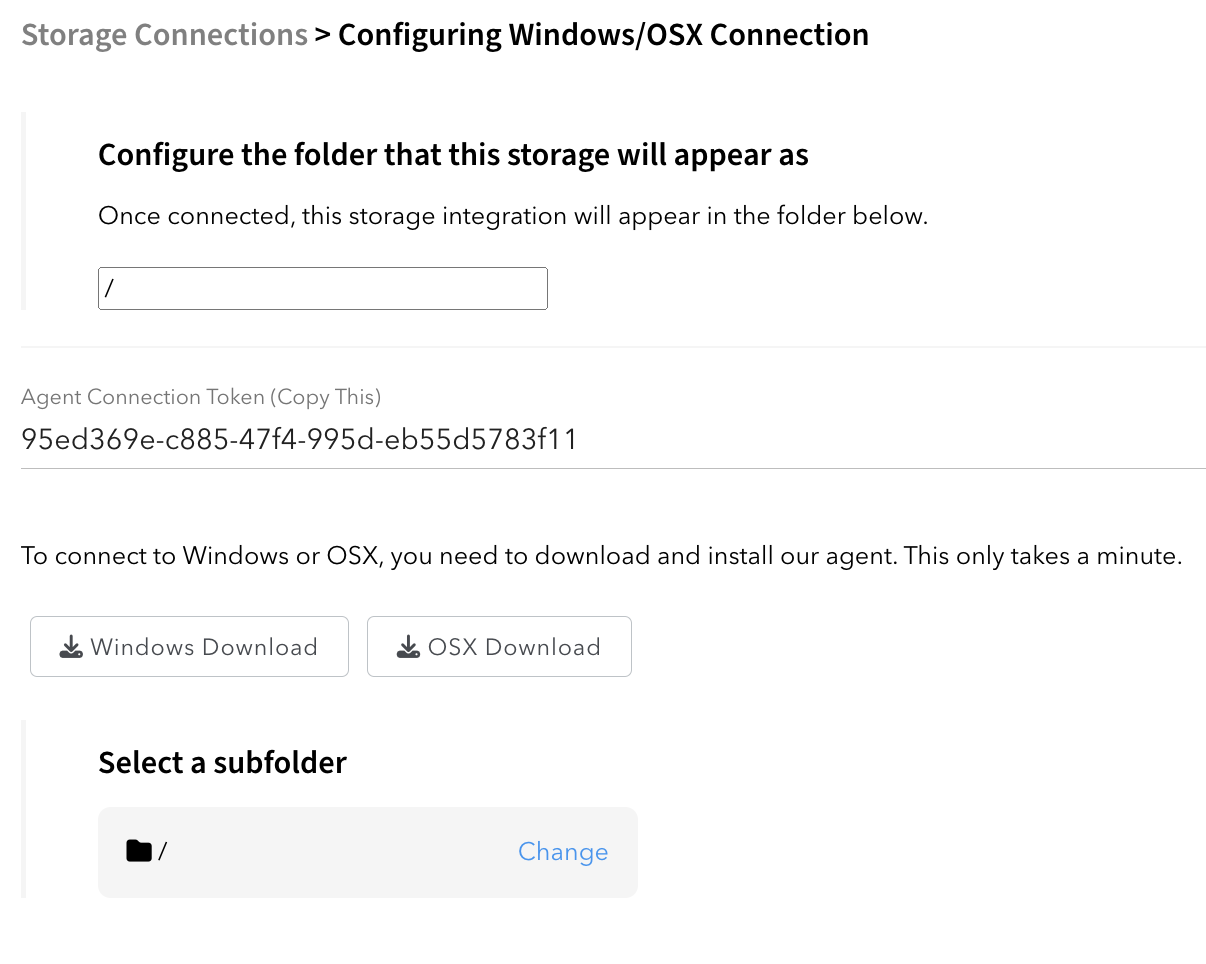 Be sure to copy the Agent Connection Token, as this will be used in a later step. Next, run the installer and follow the prompts on the setup wizard.
Be sure to copy the Agent Connection Token, as this will be used in a later step. Next, run the installer and follow the prompts on the setup wizard.
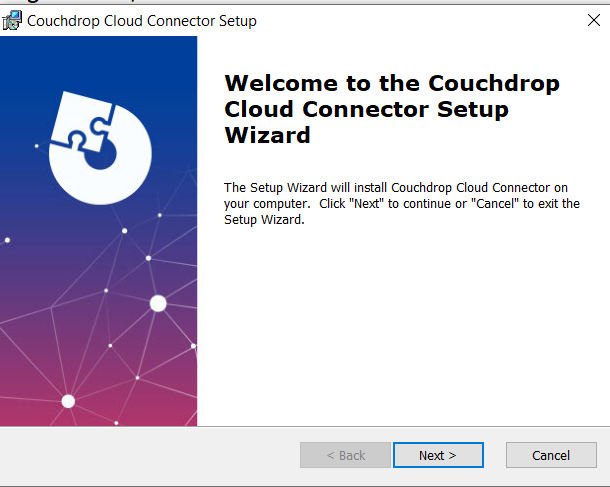 Complete the installation. If the Cloud Connector Application doesn’t start automatically once the installation is complete, open it manually to continue setup.
Complete the installation. If the Cloud Connector Application doesn’t start automatically once the installation is complete, open it manually to continue setup.

The Couchdrop Connector window will open with your device information. There is also a field to enter the Agent Connection Token from your Couchdrop account.
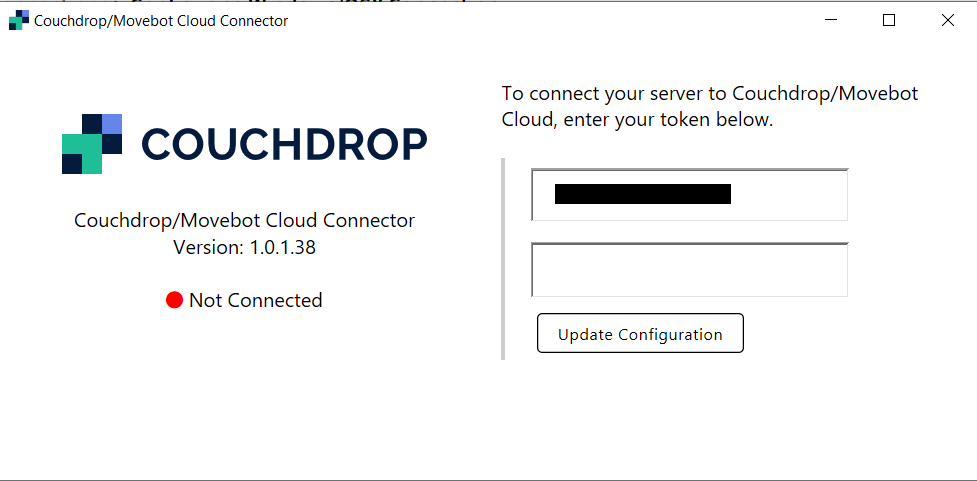
Paste the token and click Update Configuration. The Not Connected should change to a green dot and show Connected.
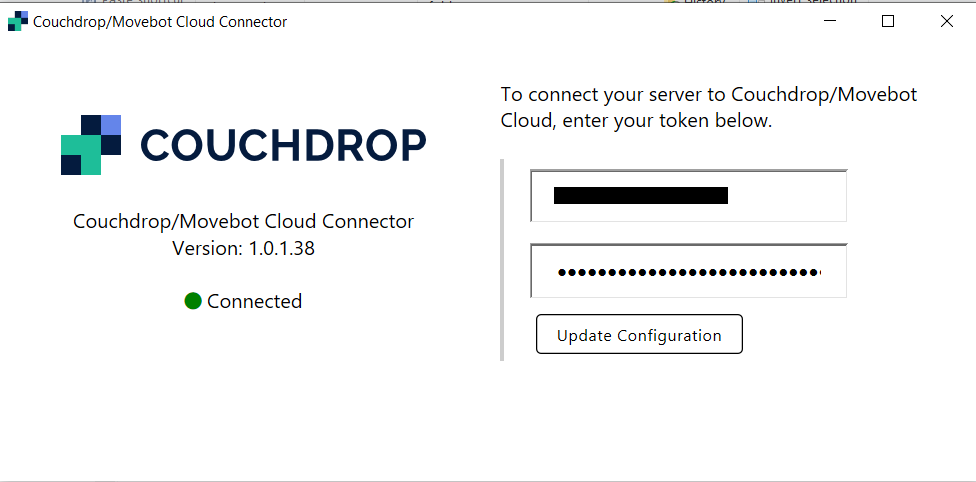 If the Connector continues to show Not Connected, you may need to manually run the Couchdrop Cloud Connector Service after clicking Update Configuration.
If the Connector continues to show Not Connected, you may need to manually run the Couchdrop Cloud Connector Service after clicking Update Configuration.

If you plan to run automations regularly or want to ensure the Couchdrop agent stays connected automatically, you can run the agent as a service. To do this, use the NSSM service manager. For more detailed instructions, read more about how to install the agent as a service.
Once the agent has successfully connected, return to your Couchdrop account. Before clicking Save Storage, you can choose to select a subfolder from your server as the top-level directory for user access within Couchdrop (or create a new one, such as “netsuite”). After choosing a folder, Save Storage and you can access generated NetSuite files directly in Couchdrop. It will show as “agent” in your Couchdrop folders.

Method 2: Connecting to NetSuite as a remote SFTP server
If you want to connect to files stored in your NetSuite cloud instead of your own servers, one option to do this is using the SFTP Connector SuiteApp and using Couchdrop to connect to it as a remote SFTP server. First, set up the SFTP Connector SuiteApp. If you haven’t done this yet, you can follow the NetSuite guide.
You can also connect using NetSuite OpenAir SFTP to SharePoint. Both options follow the same process within Couchdrop.
In Couchdrop, click Add Storage Integration and then choose SFTP Server from the list of options.
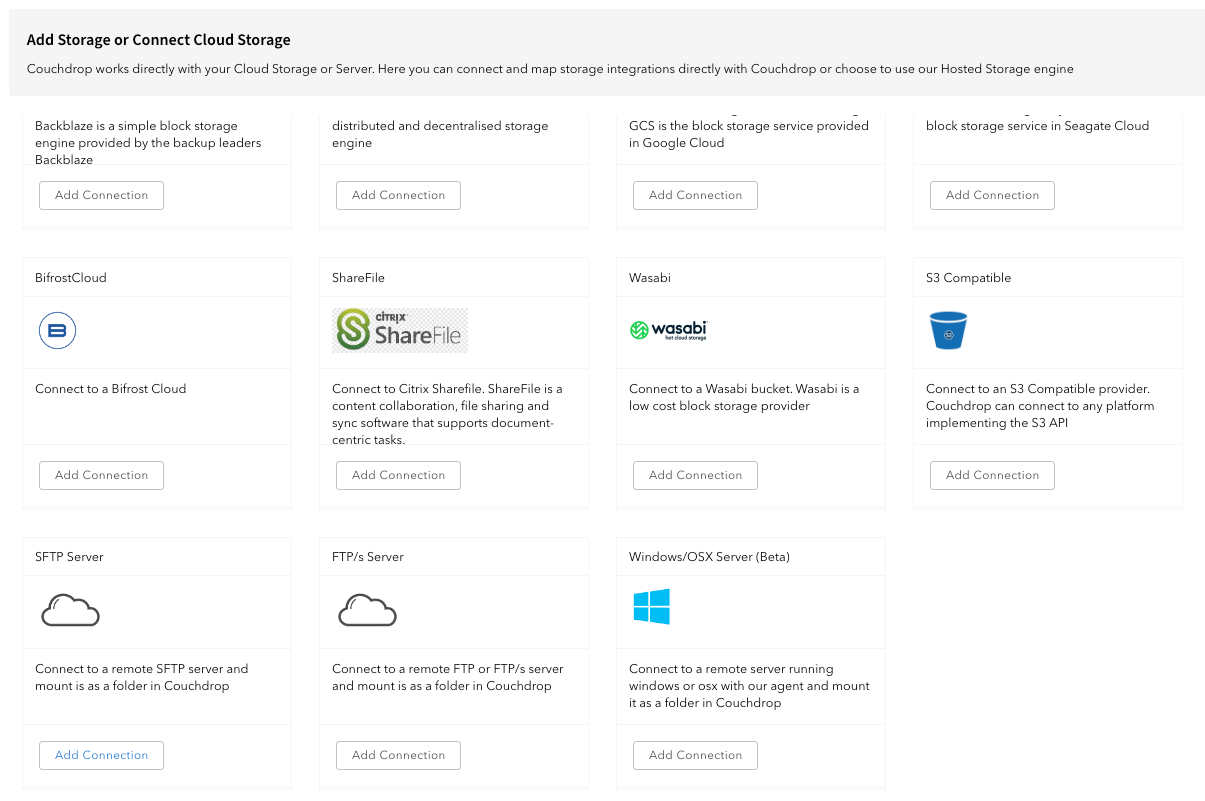 A new window will open. Choose how you want the folder to show in Couchdrop, and then enter the SFTP server connection details from your NetSuite account.
A new window will open. Choose how you want the folder to show in Couchdrop, and then enter the SFTP server connection details from your NetSuite account.
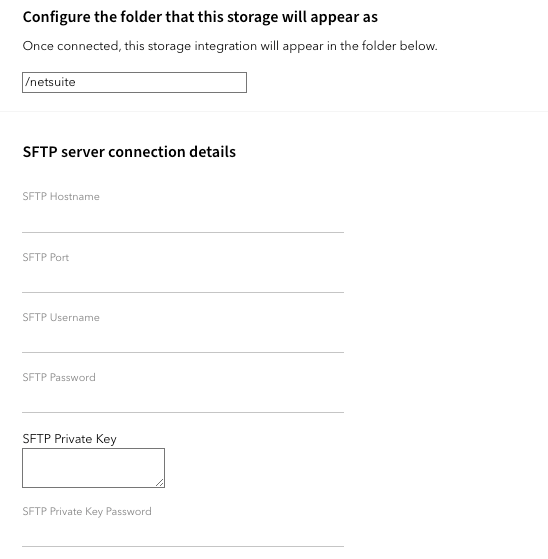 After entering the server details, click the Test Connection link on this same page.
After entering the server details, click the Test Connection link on this same page.
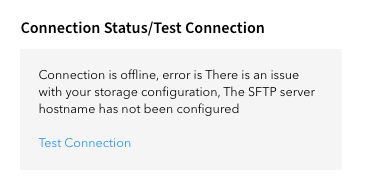 Once the connection is successful, you can select a subfolder within the server’s hierarchy to appear as the top-level folder in Couchdrop.
Once the connection is successful, you can select a subfolder within the server’s hierarchy to appear as the top-level folder in Couchdrop.
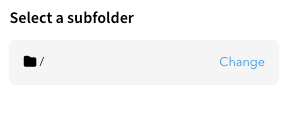
The connection will now show up in Couchdrop as an SFTP connection alongside the other storage integrations you’ve set up.
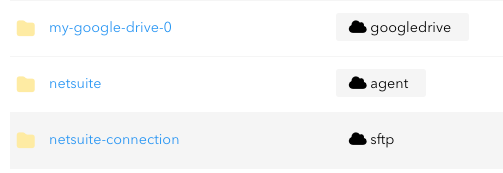
Adding SharePoint as a Storage Integration
Since Couchdrop connects to SharePoint natively, setup is quick and simple. Start by choosing Add Storage Integration and then choosing SharePoint.
A new window will open where you can input your SharePoint name and authorize the connection.
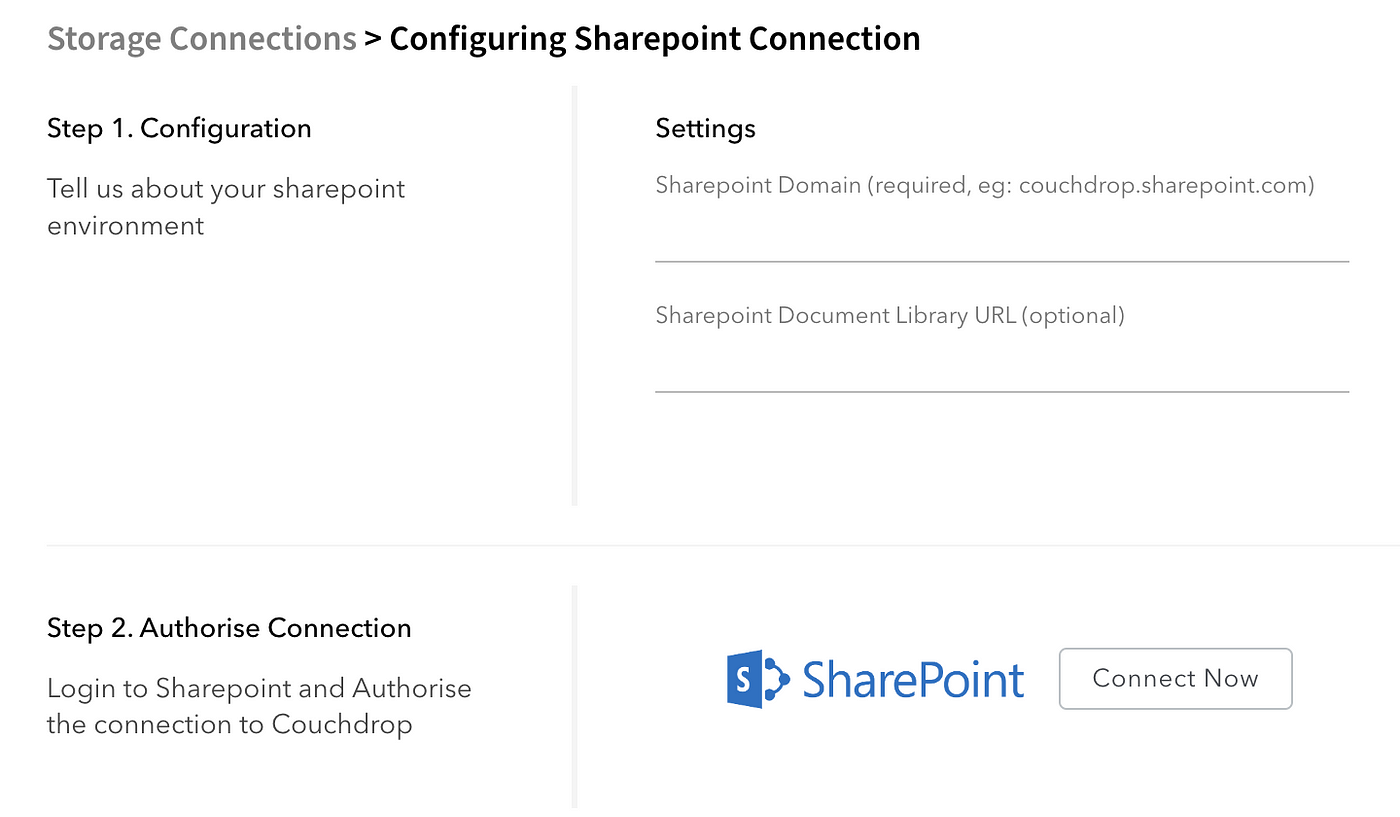 Next, click the Connect Now button to open an OAuth authentication window for SharePoint.
Next, click the Connect Now button to open an OAuth authentication window for SharePoint.
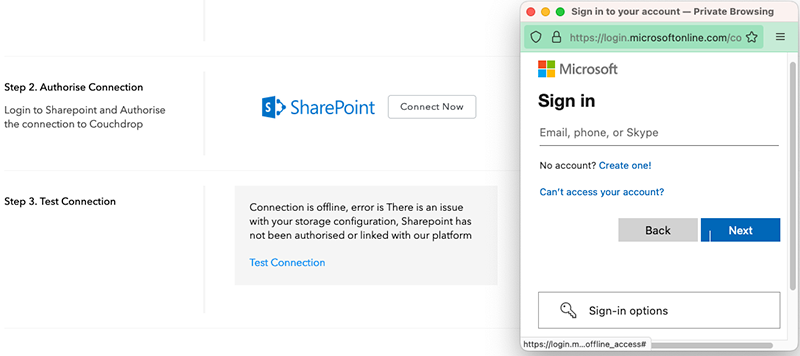
After making the connection, click Test Connection to make sure it’s working as expected. If there is an error or the connection is unsuccessful, Couchdrop will tell you so that you can fix the issue before proceeding. Finally, you can choose which folder in Couchdrop will be the mount point for SharePoint.
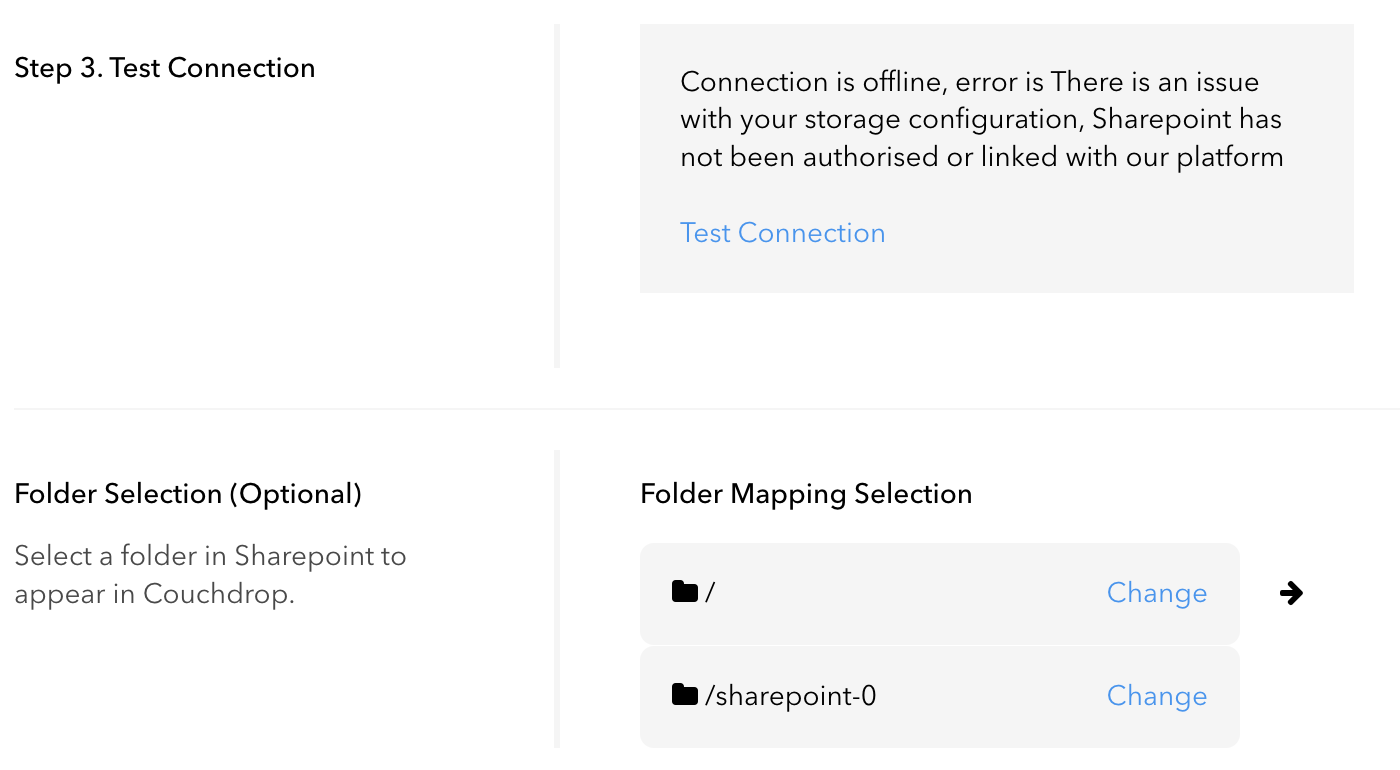
SharePoint is now connected and you can access files through Couchdrop.
Sending NetSuite files to SharePoint
With both NetSuite and SharePoint connected, you can now access files from both accounts in Couchdrop. Most users looking to copy or transfer files from NetSuite to SharePoint are looking to do this on a regular basis. The easiest way to do this is to set up file automations in Couchdrop so tasks are done automatically as needed. For a step-by-step guide on automations with SharePoint, check out the article File Automations with SharePoint.
With advanced connectivity, an easy-to-use platform that’s quick to set up, and comprehensive file automations, Couchdrop makes file transfers from NetSuite to SharePoint easy. Simply create an account, download the agent to use with NetSuite or connect to it as a remote SFTP server, and connect to SharePoint. Then you can move files between both with ease. Get started today by registering for a free 14-day trial.